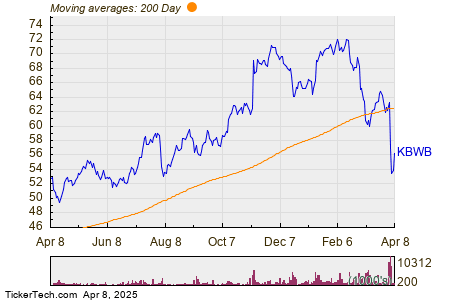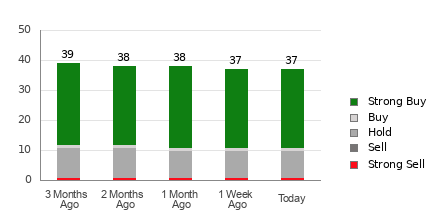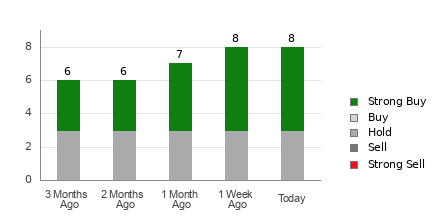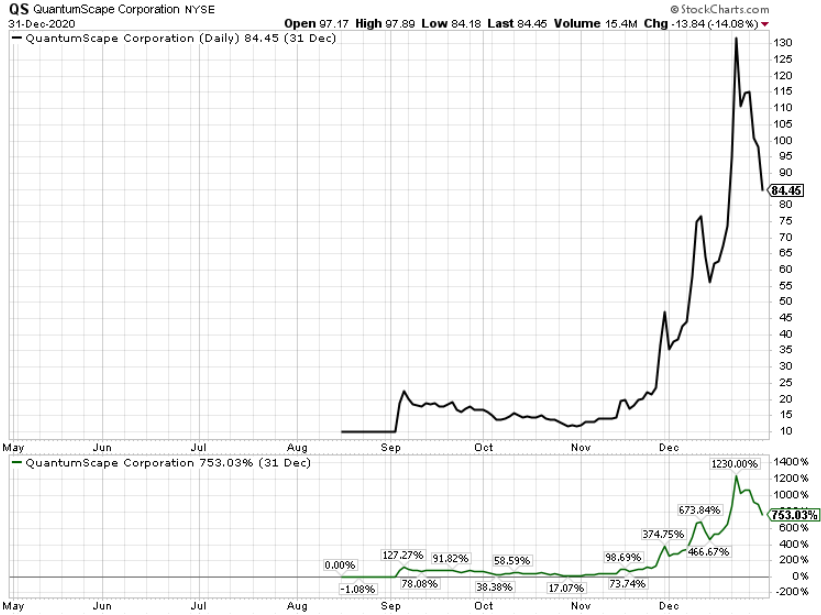Invesco KBW Bank ETF Reports Significant Outflow This Week
In a recent analysis of week-over-week changes in shares outstanding among ETFs, the Invesco KBW Bank ETF (Symbol: KBWB) has emerged as a notable case. The fund has seen approximately $194.5 million in outflows, representing a 6.0% decrease from 59,840,000 to 56,240,000 shares week over week. This decrease highlights a significant shift in investor sentiment towards this financial industry-focused ETF.
Among the primary components of KBWB, today’s trading shows positive movements for several banks. Notably, the Bank of New York Mellon Corp (Symbol: BK) has risen about 4.2%, M&T Bank Corp (Symbol: MTB) is up about 4.1%, and PNC Financial Services Group (Symbol: PNC) has increased by approximately 3.1%. For a complete list of the ETF’s holdings, visit the KBWB Holdings page. »
The following chart illustrates KBWB’s one-year price performance in relation to its 200-day moving average:

According to the chart, KBWB’s share price has fluctuated over the past year, with a low of $49.32 and a high of $72.39. The most recent trade price stood at $56.48. Investors often compare current share prices to the 200-day moving average as a technical analysis method to gauge trends. For more insight into the 200-day moving average, learn more here.
Exchange-traded funds (ETFs) operate similarly to stocks; however, instead of purchasing “shares,” investors buy and sell “units.” These units can be traded like stocks but can also be created or destroyed to meet investor demand. Our weekly monitoring of shares outstanding focuses on ETFs with significant inflows—indicating new units created—or outflows—denoting the destruction of existing units. The creation of new units necessitates the acquisition of underlying assets, while the destruction involves selling off holdings, potentially affecting the performance of the underlying components within the ETF.
![]() Click here to discover which 9 other ETFs experienced notable outflows. »
Click here to discover which 9 other ETFs experienced notable outflows. »
Also see:
- PFXF YTD Return
- MDLY YTD Return
- KMB Market Cap History
The views and opinions expressed herein are those of the author and do not necessarily reflect those of Nasdaq, Inc.










